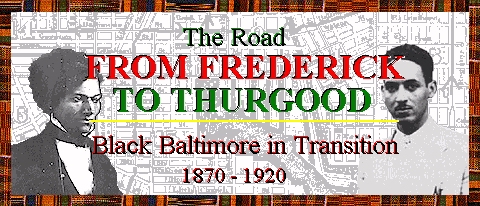 |
The Lexington Savings Bank Scandal |
 |
The Lexington Savings Bank Scandal |
When Waring returned to Baltimore on March 12, he sent telegrams to the local newspapers to announce his arrival. On March 18, the Baltimore Sun published an interview with Waring in which he explains the reasons for the bank's downfall and details the efforts he made to keep the bank afloat. According to the Baltimore Morning Herald of March 19, the stress of his predicament had begun to take a physical toll on Waring, "and he appeared to be a very sick man." He told the Sun: "I am almost crazy and I feel very much like taking my life. . . . I have been traveling around trying to loose myself or forget myself." Because the directors and stockholders had taken "but little active part . . . in the management of the institution, . . . nearly all of the work fell upon the shoulders of Waring." Accordingly, all of the responsibility for the bank's collapse belonged to him as well. Some of Waring's friends supported him during this time, noting that he "had struggled hard to maintain the bank and had used his private means to support it." Others were concerned about the effect of the bank's demise on the African American community. The Reverend P. H. A. Braxton, a stockholder, proclaimed that "the failure of the bank will be a great blow to the material interests of the colored people of Baltimore. Its successful management would have demonstrated their ability to conduct business affairs and would have marked their progress. I fear the contrary effect now, and it may be years before the community recovers from the effects of the failure."
Waring's trial was moved from Baltimore City to Howard County in 1898. Waring feared that he would not receive a fair trial in Baltimore given the hostile attitudes against him due to the failure of the bank. Sometime before the end of his trial, Waring moved from Baltimore back to his home state of Ohio, returning only to testify on his own behalf and witness the resolution of the case. The Ellicott City Times reported on April 9, 1898 that Waring was acquitted of all charges against him. Thus, the bank scandal came to an end, but not before the bank had been permanently closed, an unknown amount of money had been lost by depositors and Waring's reputation in the community was irreparably damaged. He never returned to live in Baltimore. [1]
![]() Return
to Business & Industry Introduction
Return
to Business & Industry Introduction
![]() Return
to The Road From Frederick To Thurgood Introduction
Return
to The Road From Frederick To Thurgood Introduction
|
Tell Us What You Think About the Maryland State Archives Website!
|
© Copyright April 21, 1998 Maryland State Archives